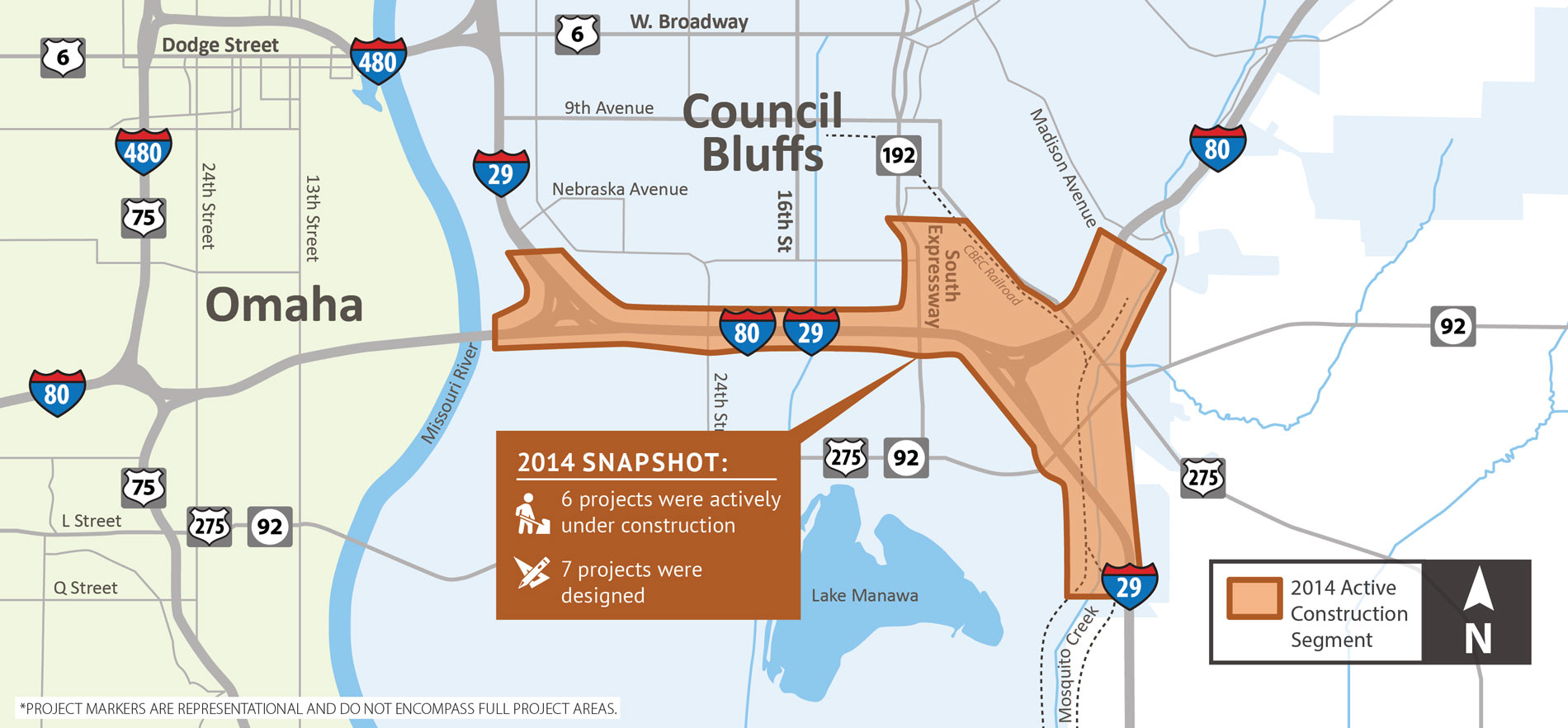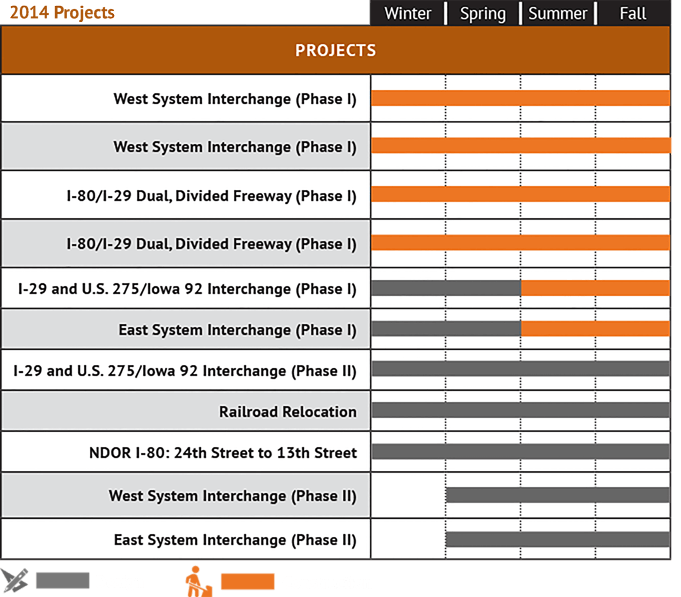The interstate system in Council Bluffs was built largely in the 1960s. It carries 75,000 vehicles a day but was designed for half that amount. By 2030, traffic is estimated to climb to more than 120,000 vehicles a day.
program status
The Iowa Transportation Commission and DOT recognizes that the Council Bluffs Interstate System Improvement Program is the largest interstate highway funding effort in the state’s history. To successfully implement this Program, the Iowa DOT will look for all opportunities to effectively and efficiently turn this significant commitment of resources into successfully implemented highway improvement projects.
Projects Let, Money Spent
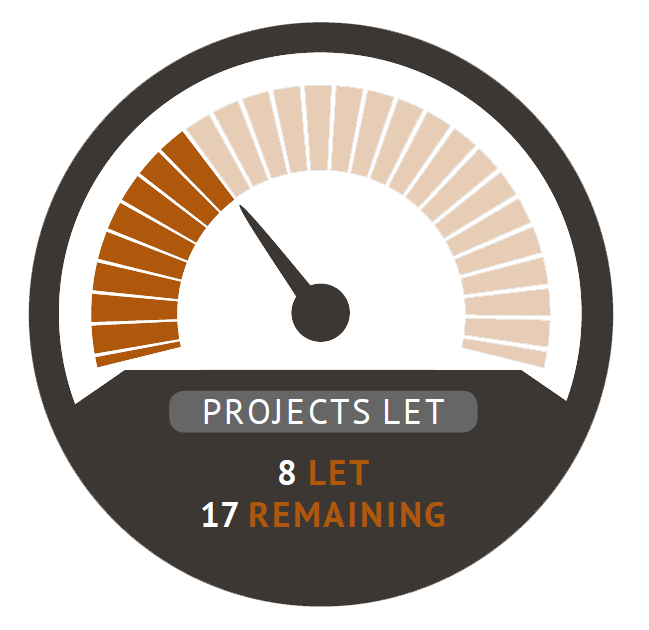
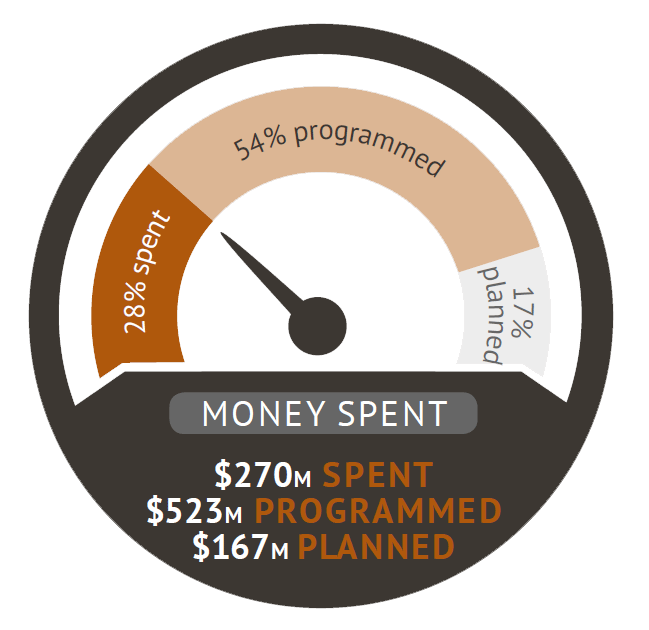
Dollars Allocated per Year
Iowa DOT's new approach applies public and contractor feedback in multiple ways to result in a better interstate system - more quickly and with fewer impacts to the traveling public.
2014 Project Spotlight
West System Interchange
Reconstruction of the West System Interchange will provide for efficient and safe vehicle movement on both I-29 and I-80 systems. An increase in the number of travel lanes and separation for both I-80 and I-29 will allow motorists to reduce the number of lane changes needed between I-80 and I-29.
The project includes full reconstruction of the system to system interchange, providing full access from I-80 and I-29 to the I-80 express lanes and the I-80/I-29 local lanes in the dual, divided freeway.
The new I-29 southbound and northbound ramps were opened in the fall of 2014, an important milestone for the Council Bluffs Interstate System Improvement Program. The next phase of work for the West System Interchange will begin this summer 2015.
public outreach
In the community

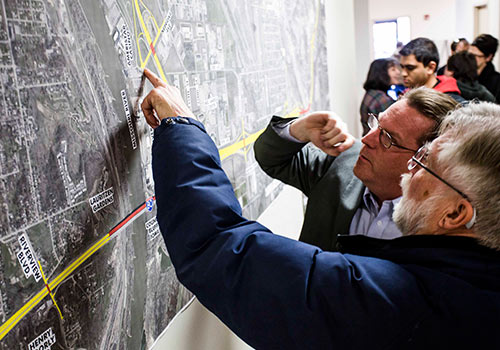
The Program Launch public meeting was held to inform the community about changes to the overall program and the construction schedule
The Program Launch meeting was held in January 2014 and a meeting for the I-29 & U.S. 275/IA 92 Construction project was held in March 2014.
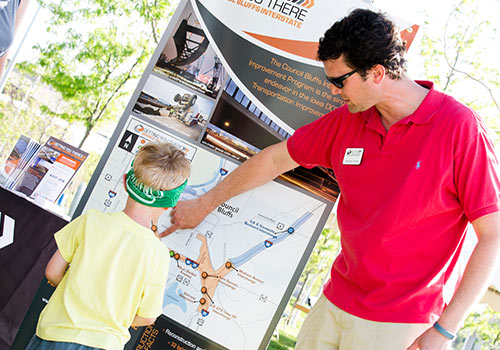
Staff attended community events, such as LoessFest, to educate the public about the program
The Program hosted booths at Farmer’s Market’s, Celebrate CB, LoessFest, Westfair, and Iowa League of Cities in 2014 to provide the public information about the Program.

A guest speaker, giving a presentation at Metro Community College
The Program responded to several requests to speak at civic group meetings and other venues to inform interested stakeholders of the Program and answer their questions.
Online Engagement

2014:
By the numbers
The Council Bluffs Interstate System Improvement Program has been active since 2008. Roll over the orange dots on the image below, which shows the I-29 northbound ramp during construction, to see statistics for the work completed in 2014.

 78,000
78,000
Cubic yards of concrete poured
 5,000
5,000
Tons of structural steel for bridges
 14
14
Lane-miles of completed lanes
 400
400
Construction workers
 3,000
3,000
Tons of reinforced steel
 720,000
720,000
Hours worked
 1,000,000
1,000,000
Cubic yards of earthwork moved
 3,000
3,000
Linear feet of retaining wall
 71
71
Storm drains
 10,000
10,000
Linear feet of pipe
 209,000
209,000
Square feet of bridge deck poured
 2,000
2,000
Linear feet of noise wall
Right-of-way


moving forward
Iowa DOT has identified several future projects that will satisfy the overall mission of the program.
Construction projects are prioritized based on the highest volume of vehicles and benefits in terms of traffic management, improved safety and increased vehicle capacity in the urban area of the interstate system.
A look ahead at 2015
Future projects include construction on I-29 north of the Union Pacific Railroad Bridge to a point just west of 25th Street. Currently, the plans for this project include the I-29/I-480/West Broadway system interchange and interchanges at 41st Street, Avenue G, Ninth Avenue and 35th Street. Two concepts are under consideration for these project improvements. Both concepts provide direct access to West Broadway from I-29 via one-way frontage roads as determined in the Tier 1 Final Environmental Impact Statement.
Another future project addressed in the Tier 1 Final EIS is extending I-80 improvements northeast of the Madison Avenue interchange to east of the U.S. 6/Kanesville Boulevard interchange.
2015 Active Project Highlights
2015 Project Spotlight
Railroad Relocation
The Railroad Relocation project consolidates the CBEC and BNSF railroad operations into a new common corridor west of Mosquito Creek under I-29 and Iowa 92.
This will improve operations at the South Expressway interchange and greatly reduce roadway/railway conflicts by consolidating railroad corridors and eliminating numerous at-grade rail crossings and the CBEC corridor that bisects Lewis Central High School. Improved railroad operations will allow select BNSF trains to bypass Council Bluffs.
The railroad reloaction will consolidate railroads into a common corridor, reduce roadway railway conflicts, and eliminate several at-grade rail crossings.




